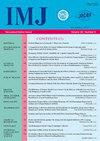MODERN ULTRASONOGRAPHY TECHNIQUES FOR MASSIVE INJURIES OF SHOULDER JOINT ROTATOR CUFF TENDONS
Q4 Medicine
引用次数: 0
Abstract
Recently the development of medical technologies has led to a significant progress in diagnosis of the shoulder joint diseases. The leading role in this was played by an improvement of such imaging methods as magnetic resonance imaging, high−resolution ultrasound scanning, having an advantage over traditional radiography, as they allow the diagnosis the pathology not only of bone structures but also of soft tissues. Magnetic resonance imaging has become the main method of visualizing the soft tissue structures of musculoskeletal system, but the high cost of the study, lack of clear and distinct indications for it reduce the number of patients. Ultrasound has proven to be one of the main methods of objective diagnosis in patients with musculoskeletal pathology, and high−frequency sensors can visualize articular cartilage and its structure, tendons of the shoulder rotator cuff and tendons of the long head of the biceps. In order to determine the most significant differential diagnostic criteria for massive rupture of the shoulder rotational cuff with the help of two−dimensional mode, color and energy Doppler mapping and functional ultrasonography, 32 patients operated on this subject were examined. The following ultrasound data were evaluated: homogeneity, echogenicity, integrity of tendon contours, presence of effusion in bursae and tendon sheaths, number of vascular signals in the affected area during color and energy Doppler mapping, if needed − the results of functional tests. Thus, modern ultrasound capabilities allow its use both for primary diagnosis and for monitoring the treatment process, which, in turn, directly affects the choice of treatment. Key words: shoulder joint, rotator cuff, ultrasound, diagnostics.肩关节肩袖肌腱大面积损伤的现代超声技术
近年来,随着医学技术的发展,肩关节疾病的诊断有了很大的进步。在这方面起主导作用的是成像方法的改进,如磁共振成像,高分辨率超声扫描,比传统的放射照相有优势,因为它们不仅可以诊断骨结构的病理,还可以诊断软组织的病理。磁共振成像已成为肌肉骨骼系统软组织结构可视化的主要方法,但其研究成本高,缺乏明确明确的适应症,减少了患者的数量。超声已被证明是客观诊断肌肉骨骼病变的主要方法之一,高频传感器可以可视化关节软骨及其结构、肩袖肌腱和肱二头肌长头肌腱。为了在二维模式、彩色和能量多普勒成像和功能超声的帮助下确定肩关节旋转袖大面积破裂的最有意义的鉴别诊断标准,我们对32例手术患者进行了检查。评估以下超声数据:均匀性、回声性、肌腱轮廓的完整性、囊和肌腱鞘内积液的存在、彩色和能量多普勒成像时受累区域血管信号的数量(如果需要)-功能检查的结果。因此,现代超声功能允许其用于初级诊断和监测治疗过程,这反过来又直接影响治疗的选择。关键词:肩关节,肩袖,超声,诊断。
本文章由计算机程序翻译,如有差异,请以英文原文为准。
求助全文
约1分钟内获得全文
求助全文
来源期刊

International Medical Journal
医学-医学:内科
自引率
0.00%
发文量
21
审稿时长
4-8 weeks
期刊介绍:
The International Medical Journal is intended to provide a multidisciplinary forum for the exchange of ideas and information among professionals concerned with medicine and related disciplines in the world. It is recognized that many other disciplines have an important contribution to make in furthering knowledge of the physical life and mental life and the Editors welcome relevant contributions from them.
The Editors and Publishers wish to encourage a dialogue among the experts from different countries whose diverse cultures afford interesting and challenging alternatives to existing theories and practices. Priority will therefore be given to articles which are oriented to an international perspective. The journal will publish reviews of high quality on contemporary issues, significant clinical studies, and conceptual contributions, as well as serve in the rapid dissemination of important and relevant research findings.
The International Medical Journal (IMJ) was first established in 1994.
 求助内容:
求助内容: 应助结果提醒方式:
应助结果提醒方式:


